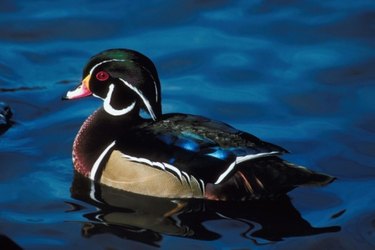
A tree-nesting duck may seem an anomaly, considering their bottom-heavy build, webbed feet and predilection for ponds, lakes, rivers, seacoasts and other waterways. While many, such as the familiar mallard, nest on the ground, a number of species in North America do indeed take over cavities and hollows in large trees to rear their offspring.
Wood Duck
Video of the Day
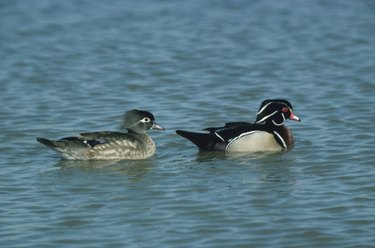
Perhaps the North American waterfowl species best-known for nesting in trees, the wood duck is also renowned as one of the most beautiful in the world. The head of the male is boldly patterned with iridescent green slashed by white, with red-rimmed eye and bill. Females are gray-headed with white eye-rings. Both sport head crests that give the impression of a helmet. Widely distributed across the U.S. and Mexico as well as southern Canada, they are most common in the Midwest and East, while a sizable breeding population also inhabits the Pacific Northwest. They inhabit bottomland swamps and the riparian woods of slow-moving rivers and other wetlands. Wood ducks favor cavity openings 4 inches across and hollows 2 feet deep. These nests may be positioned 50 feet in the canopy -- sometimes directly over water, sometimes a mile or so away.
Video of the Day
Mergansers
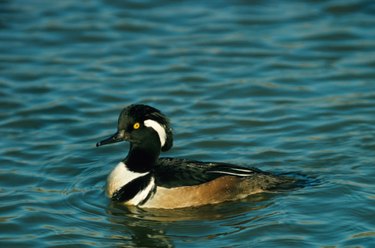
In North America, both common and hooded mergansers often nest in trees. These slim-beaked, fish-eating ducks utilize habitats for wintering, breeding or migrating; the common merganser ranges as far north as interior Alaska. Common mergansers are large, sleek-headed ducks partial to big rivers, lakes and seacoasts. Males have deep-green heads, dark saddles and white sides, while females have rufous heads and grayish bodies. They often nest in big trees bordering water bodies, occupying cavities bored out by woodpeckers or hollow-ridden snags. The hooded merganser, an inhabitant of tree-ringed ponds and swamps, is notably smaller. Males flare an impressive head-crest of black and white, while females are gray- or rust-headed. They favor small tree cavities of similar size and position as those used by wood ducks.
Goldeneyes
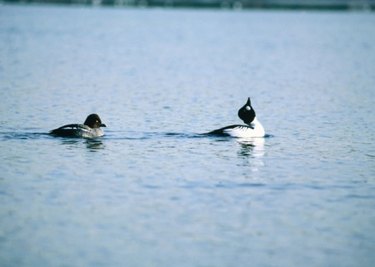
Both the common and Barrow's goldeneye nest in tree cavities. These diving ducks, found in cold-water rivers, lakes and ocean bays, are named for the arresting color of their eyes, framed by black (in the case of males) or deep brown (in females). Roughly similar in size, common goldeneyes are more widely distributed, found in one season or another across much of the U.S. and Canada, while the Barrow's ranges the Northwest and far Northeast. The Barrow's goldeneye readily nests in a variety of habitats, from rock openings to bank hollows, but often rears its young in the holes of snags or woodpecker-excavated trees. Common goldeneyes favor bottomland hardwoods like silver maples or elms in the East or aspens in conifer-dominated forests of the North and West.
Bufflehead
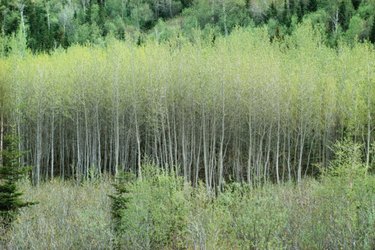
The short, active bufflehead, another big-headed diving duck of forest ponds and lakes, often nests in the holes engineered by flickers (a kind of woodpecker) in aspen trees, though other trees used across their large northern breeding range include Douglas firs, ponderosa pines, black cottonwoods and poplars.
- Cornell Lab of Ornithology: All About Birds - Wood Duck, Life History
- Cornell Lab of Ornithology: All About Birds - Common Merganser, Life History
- Cornell Lab of Ornithology: All About Birds - Hooded Merganser, Life History
- The Sea Duck Joint Venture: Common Merganser
- U.S. Department of Agriculture - Natural Resources Conservation Service: Wood Duck - Nest Boxes